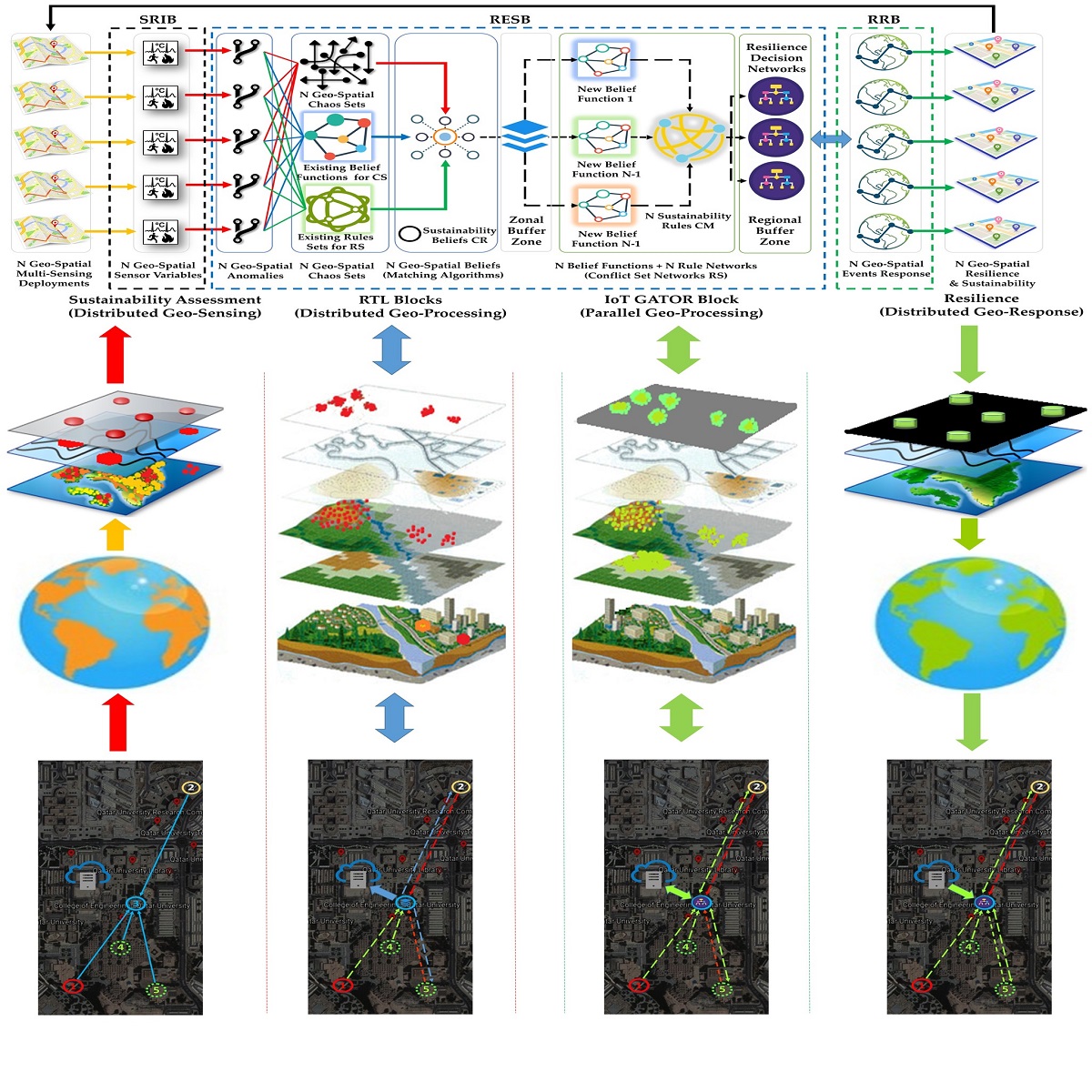Swift and diligent resilience response is mandatory in sustainable geo-distributed ecosystems. The real-time geo-spatial resilience requires agility in millions of parallel and distributed data processing tasks on data acquired from regional condition monitoring(RCM) systems. These tasks include expiditous resolution of complex sustainability conflict sets, promptly anomalies characterization in chaos sets, and resilience response uniqueness. This work is an archetype of a paragon geo-resilience support system(GRSS) for regional sustainability using a novel melioration in DADO production machine. The proposed expert system capitalized the synergic strengths of RETE, TREAT, LEAPS and GATOR networks was designed and implemented as a synthetic DADO machine(SDM). The generic architecture of DADO machine was improved in this work by enrichment in rule set conditions and solution set for regional scale resilience rule set conditions. The condition left-hand side(LHS) X equal to the solution set 2X for right-hand side (RHS) was the goal achieved by working memory(WM) optimization and conflict resolution strategy(CRS) in alpha and beta networks rules. A round-trip time of 80.2 seconds for first event response set using 1492 segment size and sequence number 360,000 with maximum packets at a single geospatial structure was 21 packets/sec was a noticeable landmark in this work. LEAPS and Concurrent-read algorithm for GATOR cluster networks in the proposed synthetic DADO machine architecture was the overall implementation that enabled urban scale resilient system practically possible on physical SHM deployment.

